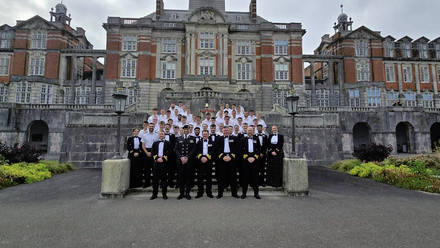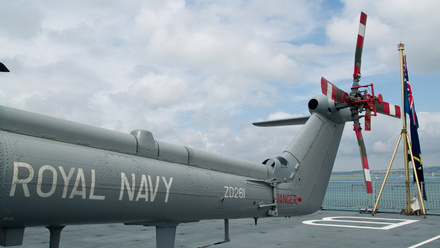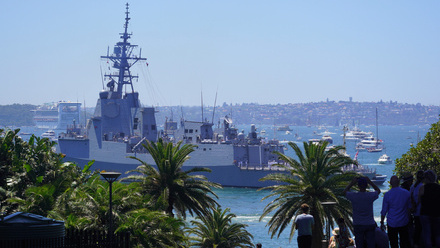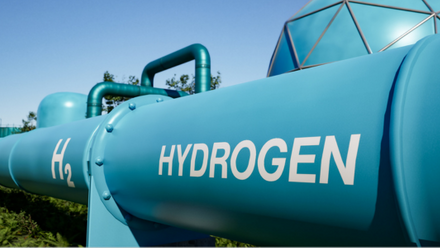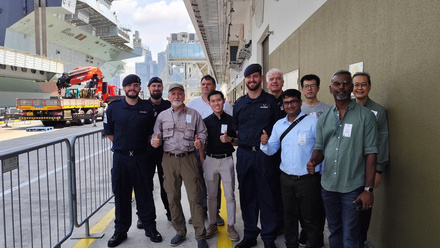The Arleigh Burke: In a class of its own
On 4th July 1991, the US Navy commissioned the guided missile destroyer Arleigh Burke, named after a Second World War hero, and the first of what has become the largest class of destroyers built for it since World War II.
Design of the class was heavily influenced by two previous events. Firstly, on 29th September 1975, the US cruiser Belknap collided with the aircraft carrier John F Kennedy and caught fire.
This was so intense that the vessel’s aluminium superstructure melted down to the steel hull. Use of aluminium in some warships’ upper works, including the then current US destroyers, had been adopted to save weight and improve stability with the increasing amount of electronic equipment mounted high up, but would not be repeated in future.
Then, in 1982, the UK Royal Navy sustained several ship losses during the Falkland’s War. In particular, the Type 42 destroyer HMS Sheffield was hit by an Exocet missile, which while not exploding, discharged its burning fuel and the ship was eventually lost.
Fires changed design considerations
The result of the above incidents led to the Arleigh Burke design adopting a steel superstructure and protecting the vital spaces from missile attack with double-spaced steel layers, and 70 tons of Kevlar armour.
The basic design uses a hull form with a greater beam of 18m for its length of 153.92m (increased by 1.37m in the later variants) than previously. The resulting larger water-plane area, coupled with a highly-raked bow, significantly improves seakeeping and enables high speeds to be maintained in rough seas. The design also incorporates many stealth features, including angled surfaces for the superstructure and a raked tripod mainmast, reducing infrared and radar cross-sections.
Centre piece of the design is an upgraded Aegis Combat System and the SPY-1D multi-function passive electronically scanned phased array radar system. This performs search, tracking, and missile guidance functions simultaneously with a capacity of handling more than 100 targets at a range greater than 100 nautical miles.

USS Donald Cook, an Arleigh Burke-class guided missile destroyer of the United States Navy (Shutterstock)
Armament includes a mix of various missile systems for anti-aircraft, land attack, and ship-to-ship use, all stored in and fired from Mark 41 Vertical Launching System cells - 90 cells on Flights I and II variants and 96 cells starting with Flight IIA. Also fitted is an anti-submarine warfare system, together with a five-inch gun and at least one Phalanx close-in weapon system. Overall, though classed as destroyers, they are more heavily armed than many preceding guided-missile cruiser classes.
Propulsion is by four General Electric LM2500-30 gas turbines each rated at 19,570kW, driving a pair of five-blade controllable-pitch propellers for a speed of 30+ knots, while range is 4,400 nautical miles at 20 knots.
Just two companies supply the ships
The first of class was finally laid down in December 1988, launching in September 1989, and completing in July 1991. The class has been built, under construction or ordered from just two companies - 47 examples from Bath Iron Works, and 42 by Ingalls Shipbuilding, with three more orders announced but as yet unassigned.
Collisions and attacks while in service
With the decommissioning of the last Spruance class destroyer, USS Cushing, in September 2005, the Arleigh Burke class became the US Navy's sole active destroyers until the ill-fated Zumwalt class lead ship joined in 2016.
To date three vessels have been involved in collisions, while one, the USS Cole, a Flight I example, was damaged in October 2000 while docked in Aden, Yemen, by a suicide boat, killing 17 crew members. The ship was repaired and returned to duty in 2001.
On 7th October 2023 the first Flight III variant, the Jack H Lucas, entered service.
Variants:
Over the years four variants, Flights I, II, IIA and III, have been built involving various upgrades to weaponry and electronics including the following:
· Flight I – 21 examples, initial design version
· Flight II – seven examples, upgraded communications and adopted AN/SRS-1A(V) Combat Direction Finder
· Flight IIA – 47 examples, fitted with Kingfisher mine detection system, and five blast-resistant bulkheads
· Flight III – 17 examples, fitted with the new AN/SPY-6(V)1 advanced Air and Missile Defense Radar system
* In addition, Flights IIa and III have a hull lengthened by 1.37m to incorporate two hangars for stowing MH-60 Seahawk anti-submarine helicopters.
US Navy destroyers WW2 to present:
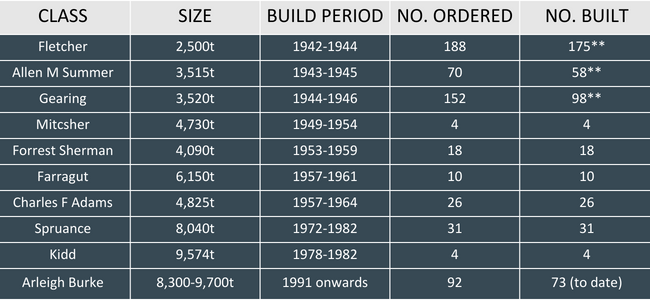
**A number of units were cancelled at the end of WWII

